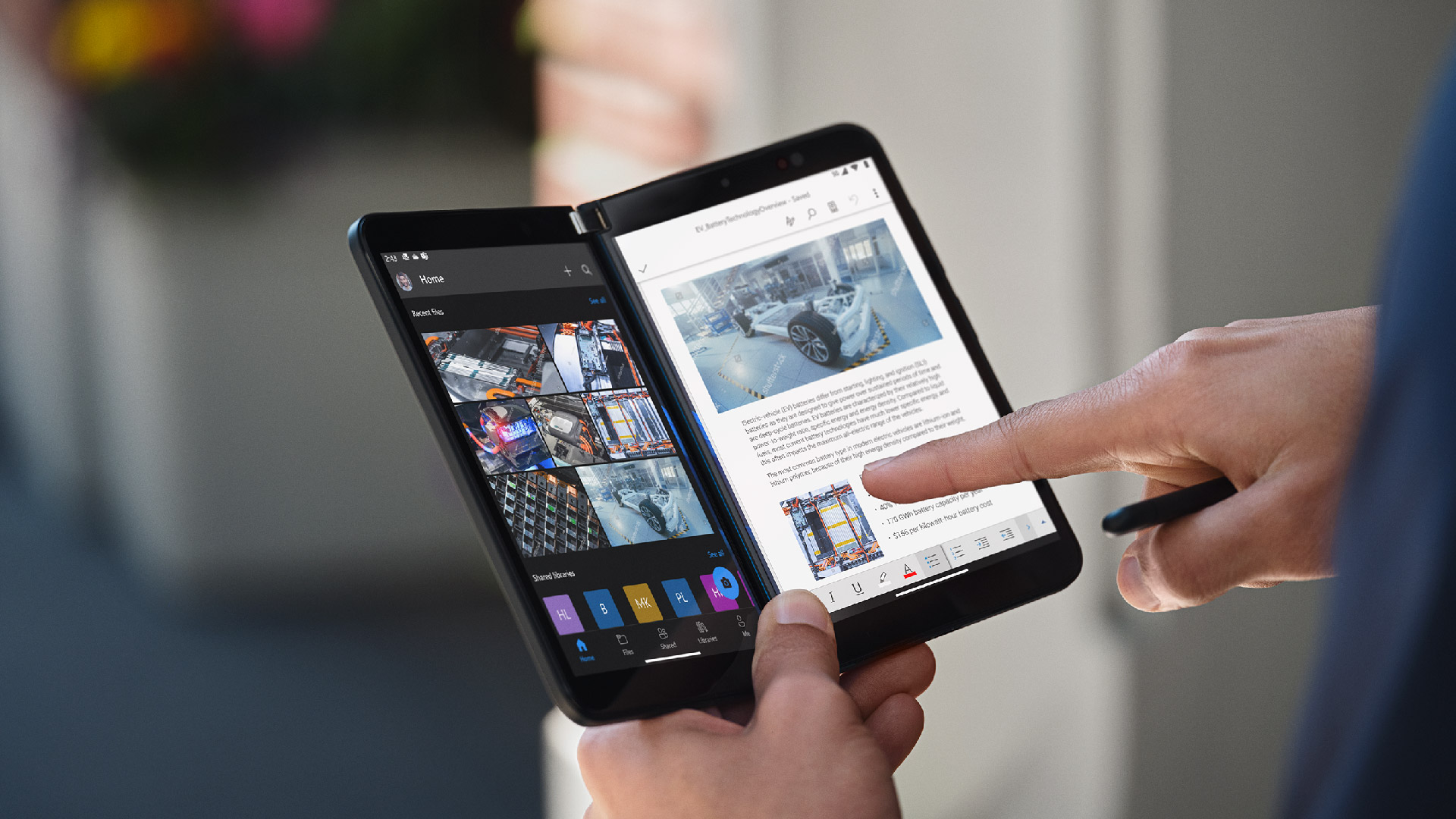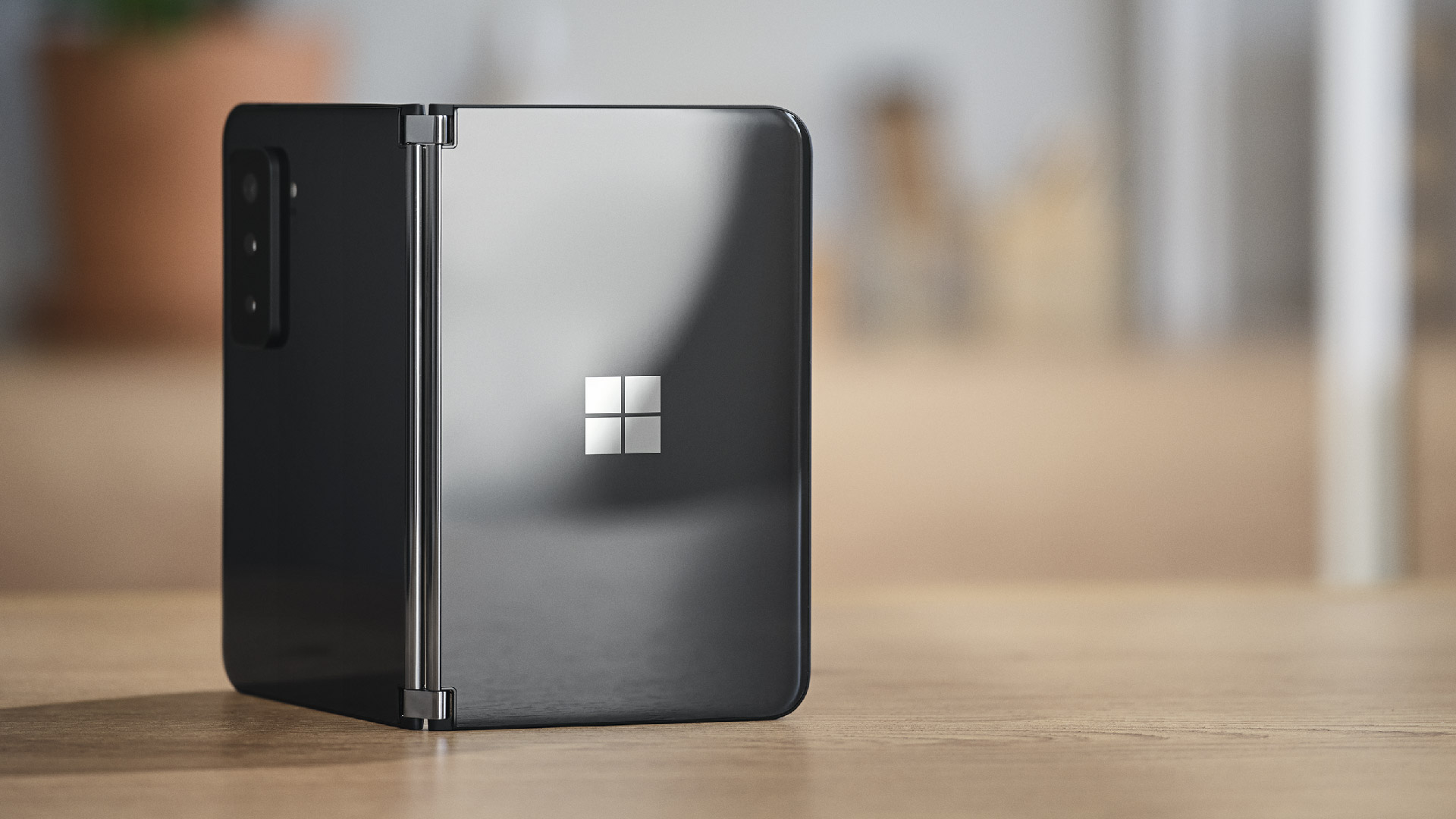
When I was first asked to test out the Microsoft Surface Duo 2, I thought my colleagues may be playing a practical joke. After one brief dabble in the Android world previously, I was known for being firmly in the iOS camp. Still, I do love when something truly innovative comes along, so I decided to give this dual screen mobile phone a fair go.
Since my first and second blogs, I’ve jotted down everything I’ve learnt (the good and the not so good). However, even though first impressions can be lasting, a lot can change in a month. Join me in this blog as I round up the hits and (near) misses for anyone looking at taking the plunge for themselves.

At first look, the Surface Duo 2 is a very attractive device: sleek, stylish, and oh! That screen space is way beyond anything the iPhone can offer. None of that squinting to make out text that isn’t optimised well or scrolling side to side with every line to read a longer email. Microsoft has nailed the quality of the build, and while it is a little heavier than, say, the iPhone 13 Pro Max, it didn’t feel heavy. Overall, first impressions were very favourable, even for this iPhone die-hard.
It does take a bit more effort to switch from iOS to any Android device than it does to another iPhone. Here’s where it pays to be proactive. The effort does pay off, though – I backed up everything to OneDrive, where I already have ample space with my Microsoft 365 subscription, meaning I could retire my iCloud subscription and farewell an ever-increasing monthly charge. A handy app called Wondershare saved me time with this process. I also installed Your Phone Companion (YPC) from the start, as this helps to get more from the Android experience, especially managing alerts. YPC also solves the issue with SMS messages losing a few characters when on the dual screen mode.
I’m one of those people who is always on the go. I work from home, the office, and customer sites in roughly equal measures, and when I’m not working, I’m at the gym or socialising, or multi-tasking at home. In other words, I am squarely in the Microsoft Surface Duo 2 target market, and I could definitely feel this in many of the thoughtful touches of the design team.
One of the real strengths was the ease of using Microsoft Teams on the Microsoft Surface Duo 2. The different modes give you plenty of options to catch your best angle, and you can join meetings and share information well. Additional functionality is added frequently. The very limited Microsoft Teams experience on an iPhone meant I used to take my laptop with me everywhere, but I found I was able to travel light most of the time if I had my Microsoft Surface Duo 2.
Another star performer was Microsoft OneNote, especially when accompanied by the Surface Slim Pen. The pen is extremely responsive and precise, and the dual screen mode makes notetaking and drawing diagrams a pleasure. The Microsoft OneNote experience was a significant productivity boost and pairing or grouping apps on the dual screen enhanced this element still further.

Using my Duo 2 while in the car, was a mixed experience. Most Android options were equivalent to the iPhone experience, but the pre-loaded Google Assistant did lack the voice commands I normally use to make calls when I am stuck in traffic. I would be surprised if Microsoft didn’t address this as a priority. What it slightly lacks on the road, though, the Microsoft Surface Duo 2 definitely makes up in the social media and leisure performance, especially if you like to have multiple apps on the go at once. I could scroll my Instagram feed at the same time as participating in a lively IM chat with friends without constantly switching back and forth. While I’m not much of a gamer, colleagues have been highly impressed by the gaming experience the Microsoft Surface Duo 2 offered and they praised the extra screen real estate. I am, though, more of a reader, and the dual screen is a pleasure for its eBook reading experience.
For anyone used to an iPhone, the good news is that the swipes to change or close apps is just as intuitive on the Microsoft Surface Duo 2, so you won’t find yourself scratching your head to work out basic functions. The device doesn’t have FaceID, but the fingerprint reader is quick and easy, and won’t care if you are wearing a face mask or dark sunglasses! Which had limited the use of my iPhone when in areas that had increased restrictions due to COVID-19.
For every app I used on the iPhone, there’s an equivalent on Android. You do have to adjust to the camera position on the right, especially when scanning check-in codes and the like. Still, that quickly became habit.
There is undoubtedly a lot of functionality that you just won’t get with an iPhone, but there are a few things I would love to see added. Top of my list would be the ability to ink in Microsoft Office apps – the device itself has excellent inking, so it seems a shame not to extend that to the already excellent Microsoft Office experience.
Other omissions are less pressing, for example the visual voicemail integration that Telstra provides for iPhones, so you don’t have to dial 101 and navigate voice menus. I also like to switch off the alarm with an external button push, which I can’t do with the Microsoft Surface Duo 2, but this is nit-picking. It would also be handy to enable two instances of Edge within an app group, or enable multiple tabs to be displayed per screen. Although these are all things I can live with.
A lot of reviews are written after just a week of using the Surface Duo 2, but I instead decided to analyse my use over a month before drawing my own conclusion. As someone who started out firmly in Team Apple, I am surprised by my response.
It was primarily the way that the Microsoft Surface Duo 2 is geared towards Microsoft 365 users that put it ahead. As a hybrid worker, I can leave my laptop at home most days I am travelling to client sites, without feeling that something is missing because I have access to everything I need in the palm of my hand. I live in the Microsoft cloud, and for me, the Microsoft Surface Duo 2 makes a lot of sense. If asking me to test out an Android device was a prank, the joke is firmly on my colleagues: the only way anyone will prise this device out of my hands is when the next version is released.
If you love to binge a good series, and haven’t yet read the two blogs that lead up to this summary, they come highly recommended (by me, of course!).
Want to learn more about the Microsoft Surface Duo 2, or see a demo for yourself? Data#3’s team of Microsoft Surface device experts is ready to help.